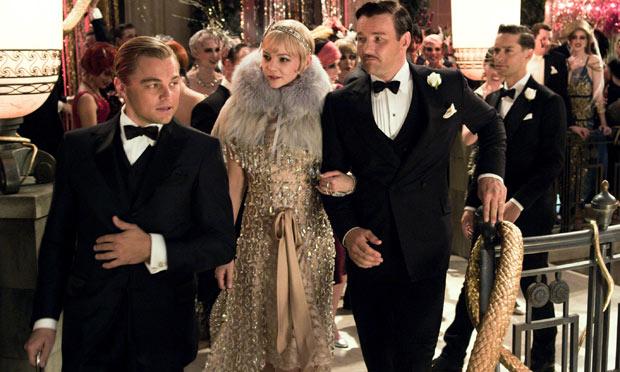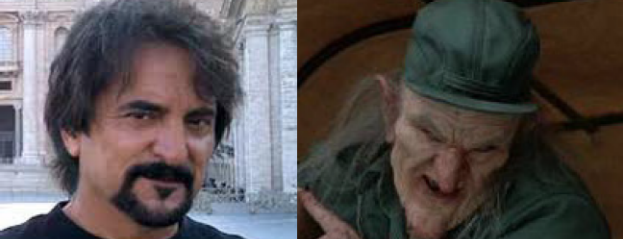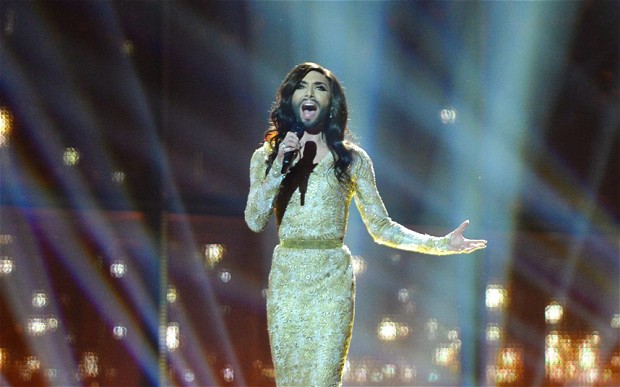Getting into character with make up and prosthetics
Very fair questions I thought.
I hope you remembered all the relevant details to put in at the right bits.
Fingers crossed for August.
X Factor Reminders
X Factor is an example of non-fiction constructed reality on British TV. It has the following four conventions, amongst others:
Constructed reality shows have high pressure stakes. In X Factor this means ticking clocks and time limits and blunt judges’ comments, at least in the early stages before they become mentors.
The viewing audience is sold the dream that any ordinary person can become a star. We see the journey of thousands whittled down to only 12 by the time we get to the live shows. The narrative structure shows how an ordinary person with flaws can be made into a more polished version of themselves with the right advice, outfits and staging.
There is elimination and competition through a combination of the voting public and the judges’ decisions. In X-Factor there is voting by text or the chance to download their track from that week’s performance to keep your favourite in the show. The judges usually have the final say about who goes home that week but sometimes they take it to “Deadlock” which means that the public vote decides.
Good constructed reality shows have their contestants in constant jeopardy of being sent home until the final winner is chosen.Part of the appeal of X Factor is that at the end of the Sunday show someone will be eliminated. The audience sees nervous contestants pitched against each other and they give the “performance of their lives” as they “face the music” literally and metaphorically in an effort to stay on till the final. The audience feels in control but quite often how a contestant is portrayed and edited counts for as much as the performance in getting the votes of the viewers.
The use of cultural codes and camera angles help to shape the audiences understanding of what is going on in all the different performances.
Traditionally constructed reality shows like X Factor use the experiences of others as entertainment for the audience at home. The drama is manufactured before a camera crew. The moments we see on screen are made to look unguarded, unscripted and intimate. We see close ups of tears and long shots of people falling to the ground in relief or sorrow. The cameras are placed in many situations – an X Factor booth for personal reactions, cameras waiting in line, cameras backstage, cameras in the contestants’ house and at least four cameras at the live shows – one on a crane, two on either side and one for filming close up and from behind. Performers are dressed up to look “transformed” and “star-like”. Ad breaks are used to set up for the next contestant and props such as plinths and special effects like smoke or falling glitter are all used to create a temporary magic. The audience marvels at the spotty youth with dirty hair who is transformed into the professional “dark horse” singer who might walk away with the prize despite being less talented than the overweight over-twenty-five aged mother who loses weight and performs flawlessly week in and week out. What we see however has been carefully set up in advance and edited in such a way to make the contestant look worthy of winning or not. These contestants are willing to sacrifice their private life for the viewing public and are very deliberately separated from their families so that their normal support systems are missing. It is acceptable voyeurism. In real life we do not get to see people eating toast on their way to rehearse but in a show like this it is perfectly acceptable as part of the process of growing into a world class star.
The Saturday evening audience will usually be a family who are not going out. Their needs and expectations are met when a programme is entertaining and the format of the show is predictable enough so that the parent(s) know their children will enjoy it without being upset by it. It begins before the watershed at 9 o’clock and any risqué content should be after that time.
X Factor X Factor sells the dream that any person with the right combination of talent, luck and looks can rise to stardom. The audience at home is shown thousands of people lining up for the open auditions. Only some of these people ever make it on to an on-screen performance. Not everyone gets to perform and be filmed in front of the judges. Filming is very expensive so will be kept for the very bad or the very good. The audience at home likes to be critical of people who are worse than they are at singing and enjoys the performance of those who actually have talent. The show used to encourage those who were bad to re-audition the next year so the home audience could laugh at them again but this is now against the rules as some people’s mental health was being affected. The producers use camera angles and non-diagetic sound to make us feel the pain and triumph of the contestants at every stage. We get background sob stories of people who are doing it for their “families” and often those families are seen back stage crying so that we can empathise with them about how important it is.
The thousands are cut down to hundreds to perform on large stages in front of a live audience and after this trial they are sent to “Boot Camp” if they are considered good enough. The final Boot Camp of hundreds is further whittled down to the “Judges Houses” stage where against a backdrop of luxurious houses and glittering sun, they are shown the life they might end up having if they become the star they wish to be. These initial stages are filmed over several months and by the time of the live shows the contestants are reduced to only 12 who are allocated judges to mentor them so that we can see who will finally make it to be the “winner”. The show needs to push the audiences’ buttons so that they have a reason to tune in every week, sometimes to cry and sometimes to cheer and even sometimes to shout at a bad decision.
X Factor needs to make a profit for the producers of the show. Viewers have to have an emotional investment in at least one of the contestants so that they vote or download the tracks so that they generate more revenue for the show’s producers Syco– owned by Simon Cowell and Sony Music Entertainment – this means that the vast majority of the profits are kept by the producers as they can control the acts and pay them much less than they would earn if they rose to fame through normal methods.
X Factor has been on our screens for 10 years now. It appears on ITV as part of their prime weekend evening slots on Saturday and Sunday nights. These weekend slots are extremely important to a commercial station like ITV and high audience figures are expected. There is an unofficial agreement that the BBC will air “Strictly Come Dancing” at an earlier slot so that the audience who might like both shows can switch over immediately after one ends to watch the start of another. Both are similar in nature in that there is a competitive element. Both are examples of the constructed reality show and follow certain conventions. X Factor has audience figures of between 7.2 and 8.6 million in 2013, with more watching on the Sunday evening than the Saturday. The BARB figures for “Strictly” for the most part outstrip the ITV performance as they are over 11.4 million for the Saturday and 10.6 for their results show. The higher the audience figures, the more ITV can charge for their advertising. Although other programmes would be considered successful with figures of 7.2 million, a Saturday evening slot needs to be bigger in order for the programme to survive long- term. They have to have an emotional investment in at least one of the contestants so that they vote or download the tracks so that they generate more revenue for the show’s producers Syco – owned by Simon Cowell and Sony Music Entertainment – this means that the vast majority of the profits are kept by the producers as they can control the acts and pay them much less than they would earn if they rose to fame through normal methods. The show makes money from: Adverts before, during and after the show; Downloads of music tracks; Selling stories to newspapers and magazines; The winning performers’ tours; The record sales after it is all over; Product placement – Samsung mobile phones and tablets were on screen constantly and Phone-in voting to decide who goes.
Traditionally constructed reality shows use the experiences of others as entertainment for the audience at home. The drama is manufactured before a camera crew. The moments we see on screen are made to look unguarded, unscripted and intimate. We see tears and people falling to the ground in relief or sorrow. The cameras are all over the place – an X Factor booth for personal reactions, cameras waiting in line, cameras backstage, cameras in the contestants’ house and at least four cameras at the live shows – one on a crane, two on either side and one for filming close up and from behind. Performers are dressed up to look “transformed” and “star-like”.
In X Factor, the audience at home grows to care about regular people who might have what it takes to be a star. Those written off by society because they are too fat or too old or too spotty or a thief might still become a star. We pay money to vote to keep our favourites in and the programme Gogglebox which showed viewers reactions to X Factor over several weeks and Twitter comments make it clear that the clever editing makes the audience engage with the programme so that they change their viewing habits to keep watching every week and often pay to vote to keep their favourite in. The artificial construct of the “reality” of transformation from “regular Joe” into stardom confirms the notion that dreams can come true as we see an eventual winner triumphing over adversity.
Hollyoaks reminders
Hollyoaks is a British Soap Opera, an example of Fiction: TV Drama. Conventionally a soap opera on a commercial station will have the following narrative structure:
1 A 30 second intro is used to get the audience ready to watch at a predictable time. For example, Hollyoaks has a regular slot on a commercial channel with 7 minutes allowed for ad breaks – 6.30-700 Adverts are what generate profit for Lime Pictures and Channel 4/E4.
2 Camera angles and movements which help to tell the story in an overt way. Establishing shots are used at the start of each new scene and then close up angles to show emotion. An example of this from the Wedding Crash episodes in 2012 were that we saw an establishing shot of two vehicles racing down a country track, then we saw very fast cuts of less than a second each of the two drivers realising that they were going to crash into one another.
3 Multiple storylines with very short scenes with fast cuts between each. An example of this was that there were two weddings – one a gay couple and one an older couple who had been married before. The older bride was not convinced that she should get married and we had over the shoulder shots of her repeating her wedding vows into the mirror and it was obvious that she was unhappy, and this cut to the happy wedding of the young gay men who had finally been able to make things work out.
4 Cliffhangers (2 per episode – one at the ad break and one at the end of the episode). An example from the Wedding Crash scenes were that the cars crashed just before the ad break and the audience didn’t know what would happen next. They kept tuning in to see the aftermath. Again at the end of the episode things were much more serious and there was debris and shouting. As the screen faded to a silent black the audience knew that someone had died but would have to tune in the next day to find out which character had gone.
***********************
The use of colour and camera angles help to shape the audiences understanding of what is going on in all the different stories. – white is used to show the innocence of the little girl about to be knocked down and white is used to show that the bride looks stereotypical even if she has behaved badly by having an affair. Black is used to foretell death of various characters such as Ruby’s bf. The very quick cuts between characters and action sequences keep the audience on their toes. In the Hollyoaks Wedding Crash episodes some cuts were less than a second between one person driving and the other in a different vehicle. This gave the audience the impression that they were in the car with the other driver and seeing the view that the person about to crash would see. Furthermore the stereotype of the bully had been developed over months and when she runs away in a cowardly fashion and then the camera shot implies that a piece of the exploding car is coming down on her head, that reinforces the audiences dislike of her so that they feel pleased when she dies. The bully was often shot in such a way that the audience at home knew more than the characters about how she was behaving. She often wore black which has connotation of evil and was dressed in black in this episode. This contrasted with a little girl wearing white who ran out in front of the racing vehicles as she represented innocence. The bully, Maddie, often seemed angelic to the adults and her friends on screen but was mercilessly ruining the life of a weaker character getting the blame for the things Maddie did. Sometimes the characters had been filmed through bushes or with people walking in front of the camera so it seemed like the audience were part of the show. It is almost like a pantomime when a nasty character has few redeeming features like Maddie so the audience feels justified in feeling pleasure at her death.
***********************
Hollyoaks has a mostly teenage and young adult audience. Their needs and expectations are met through the use of recognisable characters and situations that they will be familiar with in real life. Soap operas like Hollyoaks show major life events so that the audience feels a real connection as “their life is like mine”. Non-diegetic sound is often used in Hollyoaks to set the mood and give the audience a clue about what is going to happen. The lyrics in a soundtrack may often foreshadow something about to happen. In the Hollyoaks wedding in November 2013 the song playing on the soundtrack was “Cheating” by English soul singer and musician John Newman and this gave a clue that one of the characters was going to find out that the other had cheated so the wedding would be called off. The characters also use mobile phones at the start of the episodes to send messages to one another and this helps the audience who might have missed the previous episode to catch up with what is going on very quickly. In the Wedding Crash 2012 episodes we see an over-the-shoulder shot being used as a bride repeats her vows over and over towards the mirror and the audience immediately knew she was having second thoughts. The mirror image tells the audience that there is something “not quite right” and this foreshadows the sad events to come later on. This scene was juxtaposed with the first gay wedding in UK soap history where the two male characters looked so delighted to be getting married. The younger characters had decided to drive off and elope because they had caught “wedding fever” and this eventually led to the dramatic scenes where a car full of teens crashed through the wedding marquee causing mayhem and destruction. Cliff-hangers were used to keep the audience watching as it was not clear who would survive and if the secrets and lies of some characters would be revealed at the moment of death. The episode faded to a silent black screen but we were still not sure which characters had died. As many storylines arc at different times, it means that the audience keeps on tuning in and for this reason even the newest soap opera in the UK has been broadcast five times a week since 1995.
*******************
The institution needs to make a profit but also comply with the law: that the ad breaks before/in the middle/at the end of the episode generate income for both Lime Pictures and Channel 4/E4 which show the soap opera. The audience figures were less than 850,000 in 2012 and have risen to over 1.1 million. The regular slot comes at 6.30 on Channel 4 and there is a “first look” episode at 7 on E4. Both of these appeal to the audience as they can go easily to back-to-back episodes and Lime Pictures know that they need to comply with the law as both slots are before the watershed. Any episodes which need to deal with overt sexuality, violent death or drugs are shown as “Later” episodes which are shown around 10 at night. “Hollyoaks Later” specials tend to be on every night for a week but are additional storylines so that those who are considered too young do not need to know exactly what has happened. Hollyoaks tries to engage with their young audience differently to more traditional soaps like Coronation Street. They have a website where is it possible to watch missed episodes. The actors who play the roles also have twitter accounts where they talk about what exciting events are coming up. Unusually for a soap opera, Hollyoaks makes “behind the scenes” episodes and shows how important episodes like the crash were filmed. They also run trailers on E4 and Channel 4 to show that something important is “not to be missed”. This all helps to raise the audience numbers shown in BARB. Advertising revenue is calculated on the size of the live viewing audience so when the figures of these weeks are used, it means that Channel 4 can charge more for adverts to appear. Increasing audience share also happens when people watch online on 4OD or on a “Demand” or “Catch-up” service on their TVs. All of this helps to earn more money while still being legal.
******************
Hollyoaks developed the gay romance and wedding over several months. This plotline was important because there had been no gay weddings in British soap before and there was a lot of anti-gay marriage debate in other sections of the media, such as the Daily Mail. As the audience watched two regular characters falling in love and deciding to get married their sexuality was not a barrier to the audience understanding that the desire to make a commitment to another person is a universal hope. Soap operas are good at showing that deep down people are “just like us” and whether the person is typical or atypical that common desire should unite us rather than divide us. Because a drama developed over months can take the time to look at all the prejudices and expectations of various stereotypical characters, it can reach out to an audience in the way that a documentary or a one-off drama might not. A soap opera is a good vehicle for swaying public opinion in favour of what changes the media might want to bring about. It only works when the audience has grown to care about the characters and are entertained by their trials, tribulations and triumphs.
**********************
X Factor opening credits
Opening credits
Final supported study – Tuesday at 10.00
Come in and study together. Get your heads around representation, technical codes, influencing society etc. etc.

Congratulations to…
the sixth years who have unconditional/conditional acceptances for college . So proud!

Congratulations also to the student who will be winning the Media prize. All will be revealed…
Eurovision – ostensibly a talent show with a competitive element
Did you spot:
the raised stakes as one country was pitched against all the others?
the plinths?
the elaborate staging?
that the set resembled The Cube at some points?
the floor and walls being used to display giant computer controlled imagery?
the elaborate camera angles and movements?
the cuts to filmed intros to give the technical crew time to set up between acts?
the bold use of colour to create mood?
the use of social media to link millions of viewers across the world?
the voting method being a way of collecting revenue?
the “comedy” routines of the presenters between segments?
the ad breaks needing to be filled with Eurovision trivia as the BBC is non-commercial?
the build up of tension with pauses before casting votes?
that the British “at home” audience actually voted for most marks to be given to Poland but when added to the Judge’s votes Austria got the 12 points?
the boos for Russia despite the twins being only 17?
that Austria had worked the International media before the event so that the media were whipped up into agreeing that the vote for their act was about more than a song/artist/country?
that the Eurovision Song Contest has altered opinion over the years?
that the humorous element of voiceovers is what most people talk about?
that people across Europe have Eurovision parties with drinking games?
that “Join Us” was the tag line?
that some countries had already been knocked out but some countries who pay more get right though to the finals?





